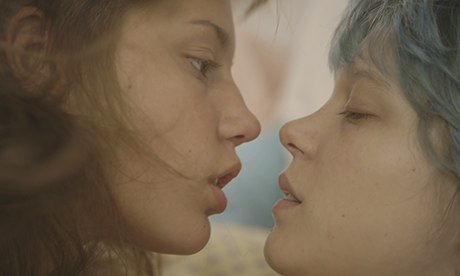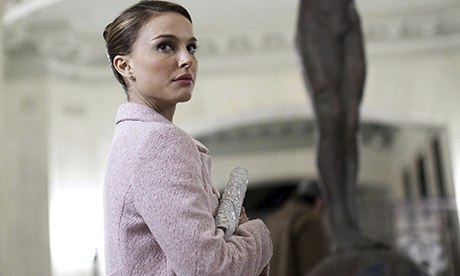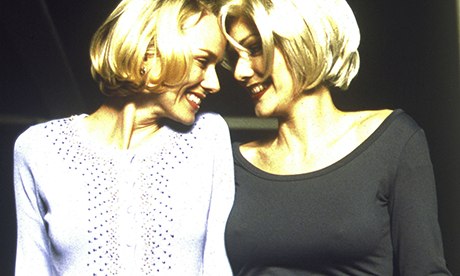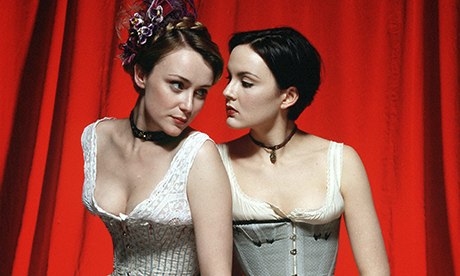Why don't cinemas and directors show proper lesbian sex scenes?
The fetishisation of gay women's sex lives by straight male directors mean serious LGBT films struggle to find major backers

Blue is the Warmest Colour: a straight man's idea of lesbian sex?
When was the last time you saw lesbian sex on the big screen? Possibly never. But you've no doubt heard about it recently, thanks to the controversy surrounding director Abellatif Kechiche's Palme d'Or-winning film Blue is the Warmest Colour.
Kechiche's motives and behaviour have come under scrutiny: Is the "lesbian" sex properly lesbian, or made from and for a straight-male perspective? Were the actresses mistreated during filming? Is Kechiche using lesbian schtick to gain publicity for a film that, by virtue of being three hours long and subtitled, is otherwise unlikely to be a hit in the UK and US?
Is it defensible that no lesbians were involved in the making of the movie? Is it fair that Julie Maroh, the lesbian author of the graphic novel the film is based on, was ignored by Kechiche when she tried to contact him?
The importance of having a variety of sexualities depicted across all cultural forums has been proved repeatedly when it comes to increasing tolerance and eliminating prejudice. Last month, anti-gay protestors picketed Ukranian film festival Molodist for daring to include gay films in its programme. Aware of the power of cinema, the protestors feared the depiction of LGBT characters could aid normalisation and acceptance of homosexuality.
 Natalie Portman in 2010's ballet thriller Black Swan, in which she has unconvincing dream-sequence lesbian sex with Mila Kunis. Photograph: Allstar/Sportsphoto Ltd
Natalie Portman in 2010's ballet thriller Black Swan, in which she has unconvincing dream-sequence lesbian sex with Mila Kunis. Photograph: Allstar/Sportsphoto Ltd
We know that seeing minority experiences portrayed on screen is important in combatting prejudice, bullying and suicide, but can you name five movies you've seen at the cinema that feature lesbian sex? Three? For the purpose of this article I'm talking about more than kisses, so no, The Hours doesn't count. Nor does Notes on a Scandal (NB, a single middle-aged woman living with her cat does not automatically equal lesbian content) or The Kids Are Alright (plenty of heterosexual sex features in this "lesbian" film – even some gay, male sex – but, bizarrely, absolutely no sapphic loving.)
There's the Portman/Kunis dream-sequence sex in Black Swan, and a similar scene in Mulholland Drive… and that's about it. Excepting lesbian/transsexual misery biopics like Heavenly Creatures, Boys Don't Cry and Monster – important in their own right, but unlikely to headline the normalisation of lesbian sex – the Wachowskis' pre-Matrix thriller Bound from 1996 is possibly the last time a lesbian relationship was depicted fully, sex and all, on general release. It therefore seems a shrewd move on Kechiche's part to bring explicit girl-on-girl sex to 21st century cinemas, because – let's face it – the mystery of what exactly gay women do in bed still seems to fascinate.
Unfortunately for fans of accuracy, lesbian women seem pretty united in thinking that Kechiche has got things wrong: complex scissor-sister positions and anguished tears are not commonplace lesbian bed activities.
For the record, I'm not claiming to know that lesbians never indulge in these antics, but for a gay character in her early 20s to introduce her teenage lover to sex in this way just does not ring true (imagine a straight coming-of-age sex scene that consists of, say, backwards-cowboy-rodeo and felching).
It's tempting to wonder why Kechiche decided to draw inspiration, not from the sexual illustrations Maroh includes in her graphic novel, but from the kind of full-Brazilian, acrobatic lesbian-sex-for-men that the internet abounds with.
Maybe he worried that Maroh's descriptions of less complex positions – sans arse-slapping but avec pubic hair – wouldn't please male audiences? And maybe he's right; certainly, the film has been well-received by male critics, whereas lesbians, including Maroh herself, have described the sex scenes as "ridiculous".
 David Lynch's Mulholland Drive. Photograph: Alamy
David Lynch's Mulholland Drive. Photograph: AlamyIt would be churlish to let negative feelings about a couple of scenes (which, although long, are still only a small part of the 179-minute whole) tarnish the entire movie experience. Adéle Exarchopoulos's central performance is brilliant; her embodiment of teenage self-discovery and heartache is compelling and convincing. But the film is undeniably marred by the inauthentic sex.
The lack of lesbian romance on the big screen is part of a wider feminist issue; funding for films about women, whatever theirsexuality, is hard to get. Every week, movies with a predominantly male cast are released, whereas the opposite is all too rare. Even in Sweden, the country that brought us the bisexual super(anti)hero,Lisbeth Salander, lesbian film struggles.
Josefine Tengblad, producer of DVD hit Kiss Me, explains how difficult it was to find funding for the movie, despite having two of Sweden's most famous actors (Bergman fave Lena Endre and Wallander himself, aka Krister Henriksson-) attached to the project.
"We encountered a continual concern from funders that audiences wouldn't be interested because the story was about two women," she says. "There was a lot of fear about the sex scenes, suggestions that we edit them or remove them completely, but we fought to keep them." Even though the film did well in Swedish cinemas and on the international festival circuit, Tengblad is finding it as difficult to fund her next film which, though not explicitly lesbian, is also about two women. "There's this belief that women's stories aren't as important or interesting as men's," she says.
This is a recognisable scenario for lesbian filmmakers around the globe. US director Nicole Conn made her first feature, Claire of the Moon, in 1992 and has continued to produce high-quality films featuring lesbian themes (and sex), without ever getting a cinematic release in the US or the UK. You probably won't have heard of Laurie Colbert and Dominique Cardona, the team behind dramas Finn's Girl and Margarita, because their films haven't had cinema distribution either, despite winning a whole host of audience awards at festivals.
Looking at the top-grossing cinema-released lesbian films in the US, it's distressing to see that female directors/writers only make the list with true-life stories of unhappy lesbians (Boys Don't Cry, Monster), or films with no lesbian sex (The Kids Are Alright, Kissing Jessica Stein).
 The popularity of the BBC's Tipping The Velvet shows that TV audiences do not reject lesbian characters, storylines, or sex scenes. Photograph: Angus Muir/BBC
The popularity of the BBC's Tipping The Velvet shows that TV audiences do not reject lesbian characters, storylines, or sex scenes. Photograph: Angus Muir/BBCIt apparently takes a male director to get the backing for sapphic multiplex sex (Black Swan, Mulholland Drive, Bound). But small-screen successes such as Orange Is the New Black, Glee, Tipping the Velvet, Upstairs Downstairs and What Remains show that audiences are happy to accept lesbian storylines in a variety of genres, directed by both men and women. It's time cinema caught up.
Back to those opening questions: has Kechiche behaved badly? Possibly, but it's not the first time a director has upset an author (cf Kubrick and The Shining) or made an actress feel terrible (cf Hitchcock with Tippi Hedren; Lars von Trier with Björk and Nicole Kidman), and unfortunately it won't be the last. While it's important that the actresses' experiences be heard, ultimately it's a shame if the negative press completely overshadows the fact that a film about a lesbian relationship has won the Palme d'Or.
With homophobic laws and sentiments on the increase in many countries, it's particularly important that LGBT film is given distribution. As Canadian lesbian director Laurie Colbert said when I asked for her views on BITWC: "I don't think we have nearly enough lesbian movies on the table to be in any rush to criticise. I still feel starved for more lesbian images."
I hope BITWC is a box-office success, because that will send a message to production companies and movie studios that lesbian films can sell tickets, thereby hopefully opening the cinema doors to the many talented-but-neglected lesbian writers and directors out there. But please take Kechiche's sex scenes with a pinch of salt.
Six excellent lesbian films you never got the chance to see
Better Than Chocolate (Anne Wheeler, 1999)
Elena Undone (Nicole Conn, 2010)
Finn's Girl (Laurie Colbert & Dominique Cardona, 2007)
Kiss Me, aka With Every Heartbeat (Alexandra-Therese Keining, 2011)
Lianna (John Sayles, 1983)
See You Next Tuesday (Drew Tobia, 2013)
-------------------------------------------------
Living and Loving Underground in Iran

Brian Rigney Hubbard
Sarah Kazemy, left, and Nikohl Boosheri in “Circumstance.”
No comments:
Post a Comment